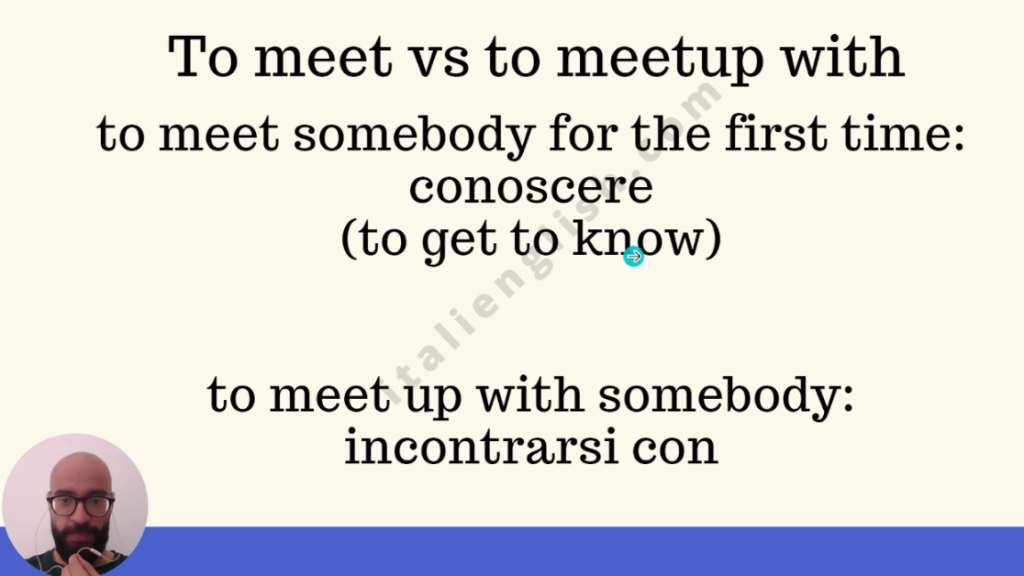Embarking on a journey to learn a new language is like diving into a world of intricate linguistic and cultural treasures. Italian, with its rich history and nuanced expressions, presents learners with the opportunity to unravel the complexities of its grammar and vocabulary. In this comprehensive guide, we will delve deep into the world of Italian verbs, with a specific focus on demystifying the differences between “to meet” and “to meet up with.” These seemingly simple verbs hold the key to unlocking the captivating intricacies of Italian language and culture. So, join me on this linguistic expedition as we dissect these verbs, explore their conjugations, and unravel the contexts in which they elegantly fit.
Content
- Unveiling the Distinctions Between “to Meet” and “to Meetup With” in Italian
- “Conoscere” is “to Meet” in Italian: The Act of Meeting for the First Time
- “Incontrarsi con”/”Vedere” is “to Meetup with” in Italian: Gathering for Social Interaction
- Clarifying Usage of “to Meet” and “to Meetup With” in Italian
- Conclusion
Unveiling the Distinctions Between “to Meet” and “to Meetup With” in Italian
Languages often encapsulate intricate differences within what seems like a single word or concept. Italian, known for its expressive nature, excels in capturing such nuances. The Italian verbs “incontrare” and “incontrarsi” precisely showcase this linguistic precision. While English uses “to meet” for both scenarios, Italian meticulously employs distinct verbs for “to meet” and “to meet up with.”
“Conoscere” is “to Meet” in Italian: The Act of Meeting for the First Time
Before we delve into the world of “incontrare” and “incontrarsi,” it’s important to clarify that the concept of “to meet” in the sense of getting acquainted with someone for the first time is actually captured by the Italian verb “conoscere.” This subtle distinction highlights the depth of Italian grammar. “Conoscere” embodies the essence of becoming acquainted with someone, stepping beyond the realms of mere interaction to truly getting to know them.
Conjugating “conoscere” reveals its distinct forms: “Io conosco, tu conosci, egli/ella conosce, noi conosciamo, voi conoscete, essi/esse conoscono.” This regular conjugation is worth noting, as it’s used to express the act of “knowing” someone rather than simply “meeting” them.
Example: “Ieri ho conosciuto Susan.” (Yesterday, I got to know Susan.)
Do you like what you’ve read so far? Wanna grab a FREE 4-videos series? Subscribe to my newsletter!

I’ll notify you of new articles and send exclusive content. Don’t worry! No spam, no unwanted emails, and no sharing your data with third parties.
